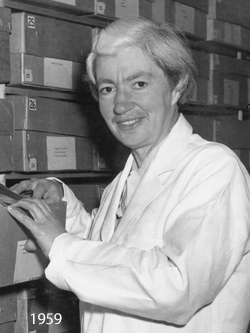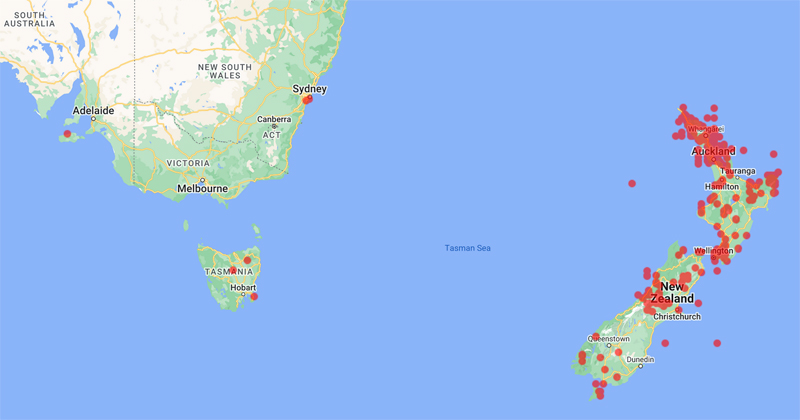
Council of Heads of Australasian Herbaria
Australian National Herbarium
Biographical Notes
 |
Council of Heads of Australasian Herbaria |
 Moore, Lucy Beatrice (1906 - 1987)
Moore, Lucy Beatrice (1906 - 1987)Born in Warkworth, New Zealand, on 14 July 1906: died on 9 June 1987 at Orewa NZ.
She went to primary school at Warkworth and then left home to attend Epsom Girls' Grammar school in Auckland. She won both a Junior and a Senior National Scholarship at Epsom Girls' as well as a University National Scholarship after enrolling as a student at Auckland University College in 1925.
Moore graduated MSc with first-class honours in 1929 under the direction of the botanist T. L. Lancaster. Her thesis was on the root parasite Dactylanthus.
She was employed from 1929 to 1938 as a demonstrator in zoology at the University of Auckland. She was awarded the Duffus Lubecki Scholarship annually between 1929 and 1931. This scholarship enabled her to undertake scientific research and she was able to balance this work with her demonstrating commitments.
She undertook a series of trips to Mt Moehau at the tip of the Coromandel Peninsula as field work for the Duffus Lubecki Scholarship. She was accompanied on most of these field trips by her close friend and fellow botanist, Lucy Cranwell. The two botanists made a number of field trips into remote parts of the country in order to contribute to information about native flora.
In May 1935 the two botanists began a 10-month trip to Britain and Europe, where they attended botanical congresses in London and Amsterdam. Moore had the opportunity to work briefly at Kristineberg and Plymouth marine biological stations, and to demonstrate zoology at University College London.
In 1938 Moore obtained a position in the botany division of the Department of Scientific and Industrial Research (DSIR). She was given responsibility for lower plants, and also assigned to work on weeds. This led to an important paper on the pasture invasion and life history of the hard fern Paesia, published in 1942.
During the Second World War, she developed a project involving the extraction of agar from seaweed, in order to grow cultures for bacteria.
In later years Moore was to remain an algologist, working with the botanical artist Nancy M. Adams to produce the widely read Plants of the New Zealand coast in 1963.
In 1953 Moore began worked with Dr Harry Allan on Volume I of the Flora of New Zealand. Her contributions include taxonomic revision in Colobanthus, Myosotis, Ourisia, Plantago, Pomaderris, and Veronica (as Hebe).
Allan's death in 1957 left her with editorial responsibility for the whole project. She produced Volume II of the series with Dr Elizabeth Edgar.
In 1960 Moore moved to the botany division of the DSIR at Lincoln. The shift coincided with the start of work on the second volume of the series.
Although Moore retired in 1971 she remained active at Lincoln until 1980. The final grassland ecology bulletin, 'The changing vegetation of Molesworth station, New Zealand, 1944 to 1971', appeared in 1976, and in 1978 she produced The Oxford Book of New Zealand Plants with J. B. Irwin as botanical illustrator.
Source: Extracted from: https://en.wikipedia.org/wiki/Lucy_Moore_(botanist)
Portrait Photo: 1959, from above.
Data from 2,451 specimens
